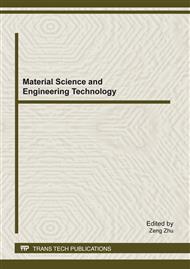p.658
p.663
p.669
p.676
p.687
p.693
p.701
p.707
p.712
The Application of Power Monitoring & Controlling System Based on Virtual Instruments
Abstract:
With the fast development of modern technology, the scale and the specification have been improved. The traditional instrument cannot meet the increasing demand of application. Therefore, the virtual instrumentation has become the trend of the future instrument. The paper has pointed out the advantages of virtual instrumentation of high performance, high expansibility, less exploring time and excellent integration. The design takes the modbus as the communication method to acquire the parameters of power instrument on the basis of PM500, Sepam20, Sepam40 and MOXA PCI RS-485 data acquisition card. It can also realize the storage and query function of data, as well as the steps of human-machine interface full of humanness, which has construct a high efficiency, precise Power Monitoring&Controlling System. It has passed testing, which can meet the needs of customers with high practical value.
Info:
Periodical:
Pages:
687-692
Citation:
Online since:
February 2012
Keywords:
Price:
Сopyright:
© 2012 Trans Tech Publications Ltd. All Rights Reserved
Share:
Citation:


